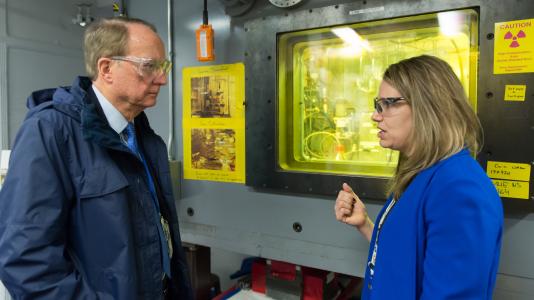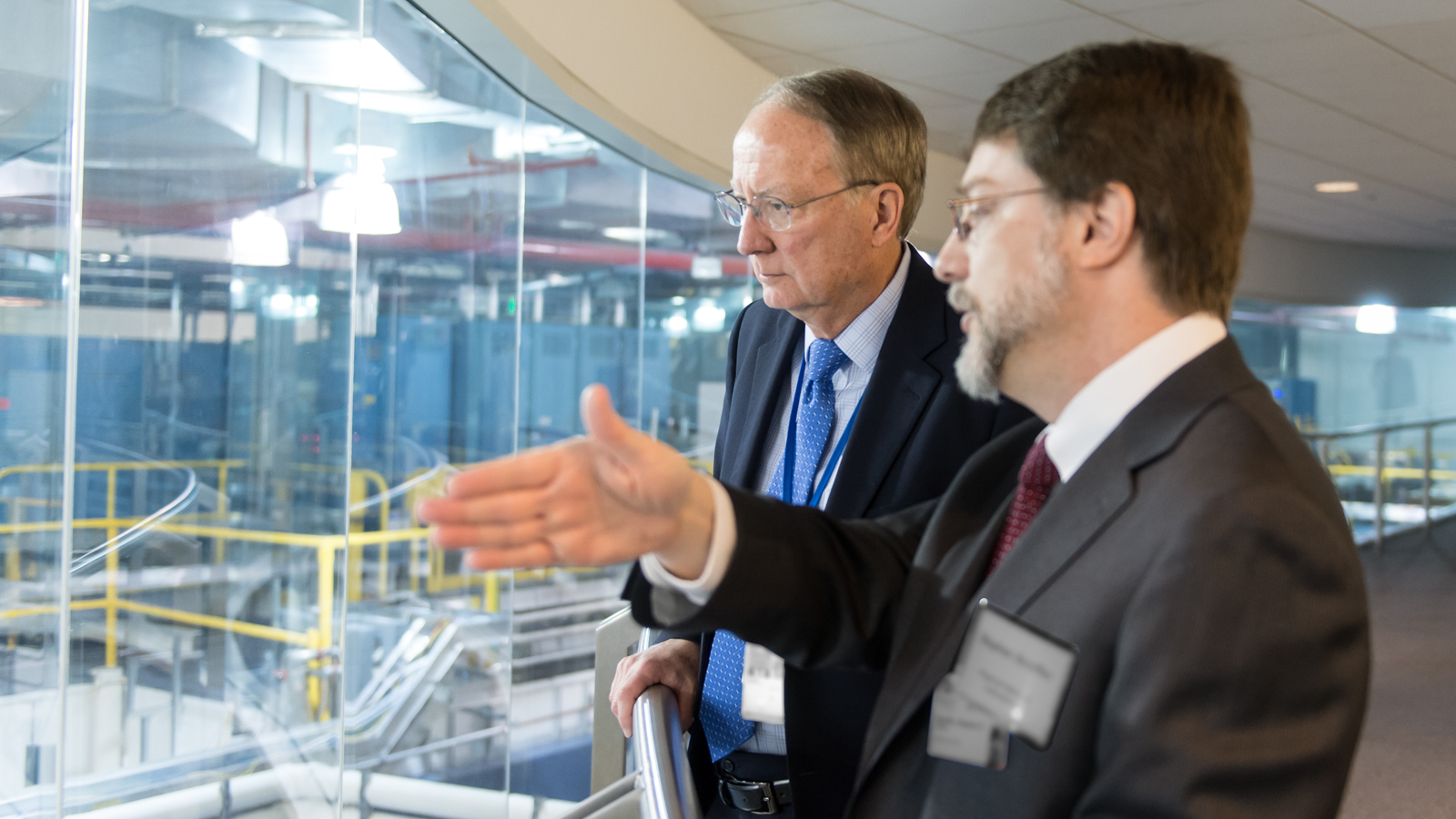
This article was originally published by the National Nuclear Security Administration.
Since its founding in 1946, the U.S. Department of Energy’s (DOE) Argonne National Laboratory has played a key scientific role in developing the beneficial use of atomic energy. In fact, over the last century, Argonne’s expertise was involved in the development of every nuclear research reactor in the United States What may be less well-known about Argonne is its partnership with NNSA to prevent the misuse of that same power.
Lt. Gen. (retired) Frank G. Klotz, Administrator of the National Nuclear Security Administration (NNSA), received a first-hand look at the role Argonne’s research and development work plays in this major national security mission when he visited the laboratory on January 15. While Argonne has its roots in the non-military use of nuclear energy and is part of the larger DOE national laboratory complex, it also works closely with NNSA in several critical areas that contribute to global nuclear security.
“Reducing the threat posed by the potential spread of nuclear weapons material is a core mission of NNSA, and Argonne has been an important partner in that effort for decades,” Klotz said. “The experience and scientific expertise of the researchers at Argonne have made the world a safer place, and it was a pleasure to meet some of those people today.”
Argonne’s decades of experience in nuclear reactor and fuel design makes the laboratory a singular resource in the nuclear nonproliferation effort.
A core mission of NNSA’s Office of Material Management and Minimization is to reduce nuclear threats by minimizing the use of highly enriched uranium (HEU) in civilian applications. This is largely achieved through conversion of nuclear reactors from the use of HEU — which can be a proliferation risk — to low enriched uranium (LEU) fuel. Since this program was launched in 1978, more than 90 reactors in dozens of countries have been converted to LEU, or verified as shut down. Argonne experts support this effort by redesigning reactor cores to use LEU, and by developing new types of fuel that can work in the reactors.
Another way Argonne works to minimize the use of HEU is in the production of critical medical isotopes. Argonne supports NNSA’s mission by developing a variety of technologies to produce the most commonly used medical isotope, molybdenum-99 (Mo-99), without the use of proliferation-sensitive HEU. Argonne supports international Mo-99 producers to convert to the use of LEU, and supports NNSA’s domestic commercial partners to accelerate development of the capability to produce Mo-99 in the United States without the use of HEU.
Argonne Director Peter B. Littlewood welcomed Klotz to the laboratory and said Argonne’s decades of experience in nuclear reactor and fuel design makes the laboratory a singular resource in the nuclear nonproliferation effort.
“Argonne was founded to help fulfill the promise of peaceful nuclear energy, and we also recognize that we must be vigilant to prevent its misuse,” Littlewood said. “We are honored to have General Klotz visit, and we hope to strengthen this partnership, which is critical to the security of the United States.”
While controlling nuclear material is important, care must also be taken with so-called dual-use materials, equipment and technologies that have peaceful applications but that can also contribute to the development of weapons of mass destruction (WMD). For example, some computer codes that are used to model nuclear reactor cores could also be used to model nuclear weapons. Argonne maintains an active trade- and technology-control program that works with NNSA to help prevent diversion of U.S. nuclear and related dual-use exports, and to further strengthen international efforts to control the trade in WMD-usable equipment and technologies.
During his visit, Klotz also toured the Advance Photon Source (APS), a DOE Office of Science User Facility at Argonne that provides the brightest storage ring-generated hard X-ray beams in the Western Hemisphere. Users perform a broad range of NNSA-supported research at the APS. NNSA supports operation of two sectors of the APS, which are used to conduct high pressure and shock physics experiments that support NNSA’s nonproliferation and defense program missions.
For Klotz, it was a full day, but one that he said emphasized the importance of cooperation across the entire DOE enterprise.
“Every site and laboratory within the DOE system is on a mission of to ensure the security of the United States, whether that be through energy security or through national security,” Klotz said. “I am proud of the contributions made by our laboratory workforce — some of the best and brightest scientific minds in the world.”
